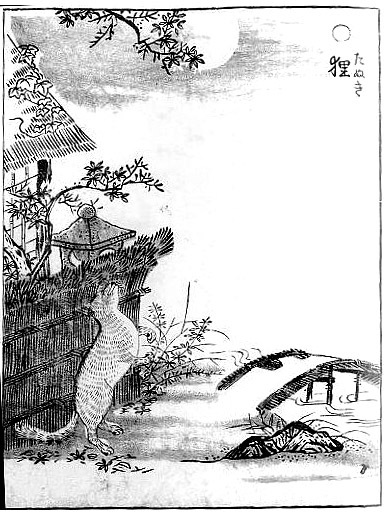
Two years ago, I went to Iwate for the summer holiday. My mother suggested that I stay at her friend’s sister house. And so I did. After supper, I retired to the tatami guestroom to sleep. However, through the night, I was awakened repeatedly by pitter-patters. Following morning, at breakfast, I told the owners that there are rats at the guestroom. But they just shrugged. They said, “Not to worry. You have just slept with zashiki-warashi, the naughty spirit child.”
Evidently, zashiki-warashi are house yokai that prefers the zashiki to any other room. Zashiki are Japanese-style parlour rooms to receive and entertain guests. In fact, these rooms have tatami floors with cushions to sit on. Zashiki-warashi are harmless but playful yokai. They enjoy small mischief and poltergeist activities. Also, they are believed to bring in wealth and luck. As such, they are considered guardians spirits of the house.
Appearance
Even though they are child-like, zashiki-warashi comes in many forms. The ghost child may be a girl with a bobbed hair in furisode or kosode. Or, a boy in warrior clothes. There are, even, descriptions of it being vague and shadowy but still child-like. Interestingly, only children can see zashiki-warashi. So, their accounts are somewhat inconsistent.
All across Japan, there are different types of zashiki-warashi. And they are of different rankings doing different activities. For example, there is kurabokko (倉ぼっこ) who inhabits and plays at warehouses. Another is makura–gaeshi (枕返シ) who frequents the bedroom and flips over your pillows. Especially when you are sleeping on it.
Conclusion
Nonetheless, zashiki-warashi is often tightly linked to the household fortune. It is said, if the spirit child leaves the house, the family’s prosperity would decline. On the other hand, if there are two or more zashiki-warashi inhabiting the house, wealth would increase multi-fold. So, if you have child-like poltergeist activities in your home, play with it. Or, if you meet an unfamiliar child in your home, do not scare it away. You may just chase you riches and fortune out the door.
Yokai Details
- name: zashiki-warashi ( zah-she-key-wah-rah-she )
- kanji: 座敷童子 (ざしきわらし)
- aka:
zashiki-warabe (座敷童)
zashiki-warashi (座敷童衆)
zashiki-bokko (座敷ぼっこ)
zashiki-kozō (座敷小僧)
okura-bokko (御蔵ボッコ) - meaning: parlour child
- abilities:
- wealth manipulation — able to attract money & riches
- intangibility — move through solid objects at will





